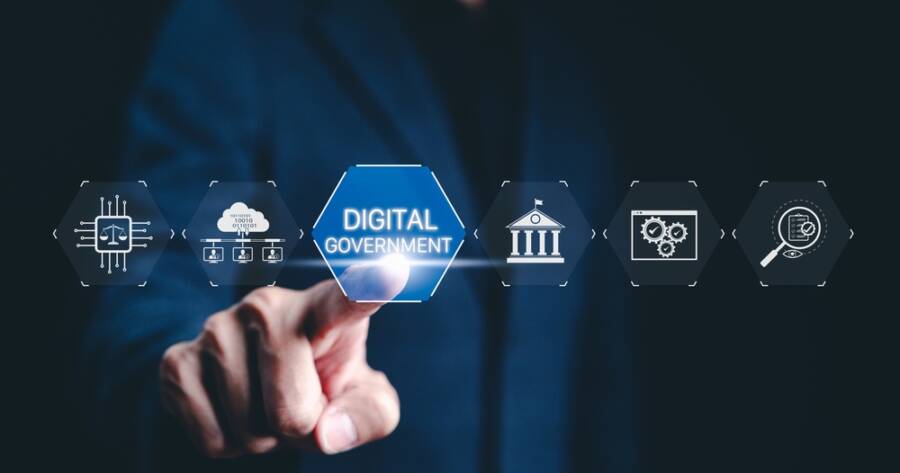The rapid advancement of technology is transforming every aspect of our lives, and government services are no exception. Digital government transformation is reshaping how public services are delivered to citizens, making them more efficient, accessible, and user-friendly. By embracing digital technologies, governments are not only enhancing the citizen experience but also improving the efficiency of public service delivery.
1. Enhancing Accessibility and Convenience
One of the primary goals of digital government transformation is to make public services more accessible to citizens, regardless of their location or socio-economic status. Traditional government processes, such as applying for permits, paying taxes, or renewing licenses, often involve long lines, paperwork, and time-consuming procedures. Digital platforms can eliminate these barriers, enabling citizens to access services online anytime and anywhere.
For example, many governments have created user-friendly websites and mobile apps where citizens can apply for services, track the status of their requests, and make payments. This shift towards digital services reduces the need for physical visits to government offices, saving time and effort for both citizens and public servants.
2. Streamlining Processes with Automation
Digital government transformation also involves streamlining administrative processes through automation. Governments around the world are adopting technologies such as artificial intelligence (AI), machine learning, and robotic process automation (RPA) to handle repetitive tasks that were once done manually. These technologies can process large volumes of data quickly and accurately, allowing government employees to focus on more complex tasks.
For example, AI-driven chatbots can answer citizens’ queries in real time, while RPA can be used to automate tasks like data entry, document processing, and permit approvals. By automating these tasks, governments can reduce human error, cut operational costs, and accelerate service delivery. Additionally, the use of data analytics and predictive modeling allows governments to optimize decision-making and resource allocation.
3. Improving Transparency and Accountability
Digital government transformation plays a crucial role in enhancing transparency and accountability in public services. By making government processes more transparent, citizens can gain greater insight into how decisions are made and how public funds are spent. This increased visibility helps build trust between the government and the public, leading to stronger civic engagement.
For example, open data platforms allow citizens to access government data on budgets, spending, and public projects. This data can be used by journalists, researchers, and citizens to hold government officials accountable for their actions. Additionally, the introduction of digital voting systems and feedback mechanisms enables citizens to participate more actively in governance, ensuring that their voices are heard in decision-making processes.
4. Enhancing Citizen-Centric Services
The goal of digital government transformation is to improve the overall experience for citizens by focusing on their needs and preferences. Governments are increasingly adopting citizen-centric approaches to service delivery, tailoring public services to meet the specific requirements of diverse populations.
For instance, governments are leveraging data analytics to understand the needs of different demographic groups, such as senior citizens, people with disabilities, or low-income communities. By gathering insights from these groups, governments can design services that are more inclusive and better aligned with citizens’ expectations. Additionally, personalized services, such as tailored notifications for public health updates or reminders for renewing licenses, help improve engagement and satisfaction.
5. Strengthening Security and Privacy
As governments digitize their services, data security and privacy become paramount concerns. Digital government transformation involves the collection and storage of vast amounts of personal data, which must be protected from cyber threats and unauthorized access. Governments must invest in robust cybersecurity frameworks to ensure that citizens’ sensitive information is safeguarded.
To address these challenges, governments are implementing advanced security measures such as encryption, multi-factor authentication, and regular security audits. Additionally, clear privacy policies and data protection regulations help ensure that citizens’ data is handled responsibly. By prioritizing security and privacy, governments can build trust with citizens and encourage them to embrace digital services.
6. Enabling Innovation and Collaboration
Digital transformation in government is not just about technology—it’s about fostering innovation and collaboration across different sectors. Governments are increasingly partnering with private companies, startups, and non-governmental organizations to co-create solutions that address complex societal challenges.
For example, public-private partnerships in the development of digital infrastructure or smart city initiatives can lead to more efficient transportation systems, better waste management, and enhanced public safety. By working together, governments and the private sector can create innovative solutions that improve the quality of life for citizens while driving economic growth.
Building a More Efficient and Inclusive Government Through Digital Transformation
Digital government transformation is revolutionizing the way public services are delivered, making them more efficient, accessible, and transparent. By embracing digital technologies such as AI, automation, and data analytics, governments can streamline processes, enhance citizen engagement, and improve the overall public service experience. As governments continue to modernize their services, the focus must remain on meeting the needs of citizens, ensuring data security, and fostering collaboration to drive innovation. Ultimately, digital transformation has the potential to build a more inclusive, efficient, and responsive government that serves the best interests of its citizens.
